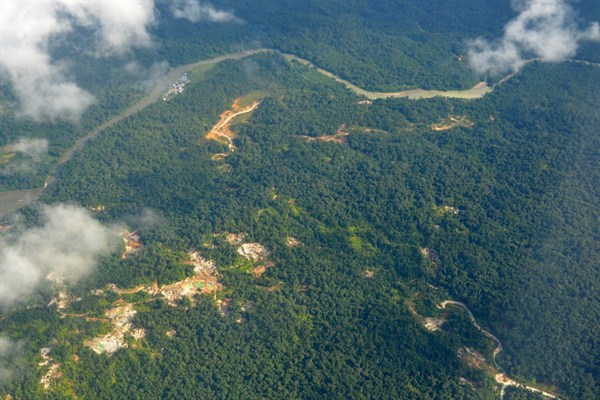In early July, the United Nations Office on Drugs and Crime, or UNODC, and Colombia’s Ministry for Mines and Energy reported that 66 percent of alluvial gold exploitation in the country is considered unregulated. Illegal mining in Colombia is nothing new, but the latest report indicated that the amount of affected land—84,000 hectares, or more than 200,00 acres—is up 6 percent since the UNODC’s first study on the subject in 2014.
The list of violent competitors trying to access these gold riches offers a snapshot of Colombia’s various social fault lines and conflicts. It includes the National Liberation Army, or ELN, a leftist guerilla group that comprises approximately 2,000 combatants; El Clan del Golfo, or Gulf Clan, a criminal syndicate formed from the ashes of the United Self-Defense Forces of Colombia, a 1990s-era paramilitary group known as AUC; and former members of the defunct Revolutionary Armed Forces of Colombia, or FARC, which ended its 52-year-long conflict with the Colombian government in 2016. Many miners are also drawn from Colombia’s poor rural population and indigenous peoples, as well as from the pool of migrant laborers from neighboring states.
In late December 2017, Colombian authorities put the number of unregulated mining operations at more than 7,000, located in 16 departments and employing approximately 133,000 artisanal miners known as barequeros. Only 19,000 of these miners are registered for a tax ID number, a requirement to legally sell minerals in Colombia. Proceeds from illegal gold mining in Colombia are estimated at approximately $2.4 billion, or three times the amount generated from Colombia’s cocaine industry. Similar to cocaine, illegal mining poses a litany of challenges, undermining the rule of law, eroding security and devastating the environment.

